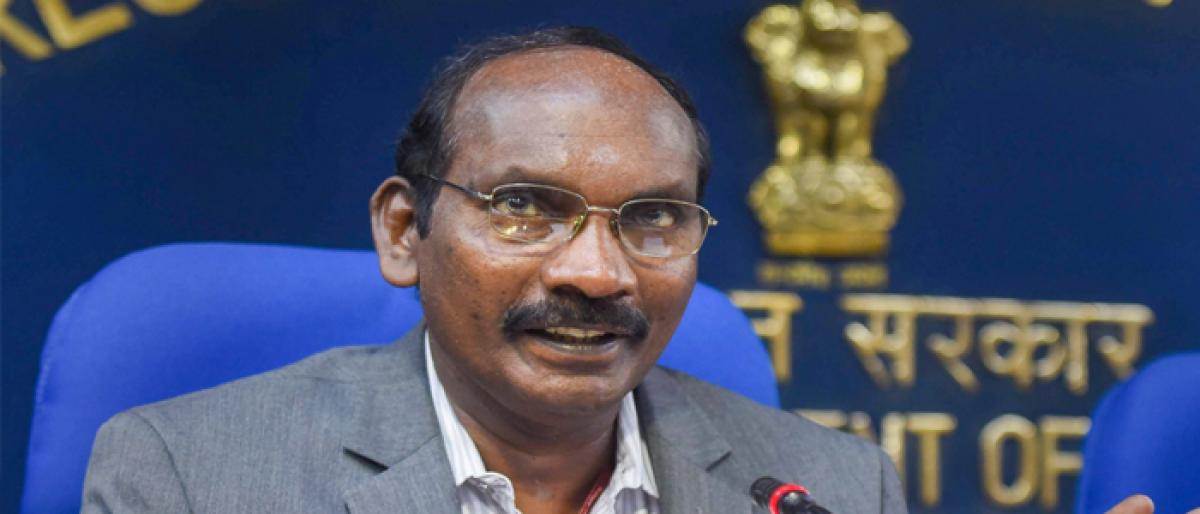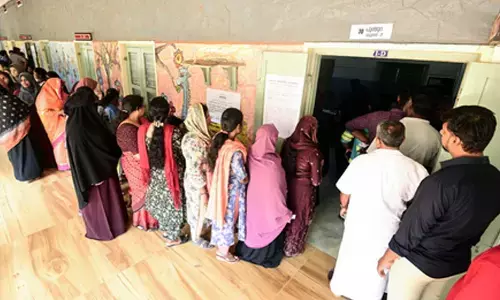Gaganyaan to send 3 persons into space

Indias first manned space flight, Gaganyaan, is expected to send three persons into space for seven days and the spacecraft will be placed in a low Earth orbit of 300400 km Giving details of the programme at a joint press conference, Minister of State for Atomic Energy and Space Jitendra Singh and ISRO Chairman K Sivan said GSLV Mk III,
New Delhi: India's first manned space flight, Gaganyaan, is expected to send three persons into space for seven days and the spacecraft will be placed in a low Earth orbit of 300-400 km. Giving details of the programme at a joint press conference, Minister of State for Atomic Energy and Space Jitendra Singh and ISRO Chairman K Sivan said GSLV Mk III, the three-stage heavy lift launch vehicle, will be used to launch Gaganyaan as it has the necessary payload capability. They said two unmanned Gaganyaan missions will be undertaken prior to sending humans.
"The total programme is expected to be completed before 2022 with the first unmanned flight within 30 months. The mission will aim to send a three-person crew to space for a period of seven days. The spacecraft will be placed in a low earth orbit of 300-400 km. The programme is expected to cost less than Rs 10,000 crore," Singh said.
Prior to the manned mission, ISRO would conduct two unmanned missions, the first one in 30 months and the second in 36 months, the ISRO Chairman said, adding that the entire mission would cost the exchequer less than Rs 10,000 crore. So far, only the US, Russia and China have successfully launched manned space missions.
Prime Minister Narendra Modi, during his recent Independence Day speech from the ramparts of the Red Fort, announced that an Indian astronaut would be in space before the country celebrates its 75th Independence Day, which falls in 2022.
According to the ISRO chief, the Gaganyaan mission would create 15,000 new employment opportunities, 13,000 of them in private industry and the space organisation would need an additional manpower of 900. Many national scientific institutions and private industrial houses would help ISRO in undertaking this ambitious mission.
As it is planned currently, an Indian astronaut, who is yet to be chosen, would be stationed at an altitude of 400 km from earth for 5-7 days, Sivan said. The payload, or orbital module, consisting of a crew module and a service module, will have a diameter of 3 metres and a height of 10 metres and would weigh about 3.8 tonnes.
The flight would take 16 minutes to reach its orbit and during the period of stay, the astronaut would carry out a series of experiments, particularly microgravity experiments. The descent, on the other hand, would take 36 minutes as care would be taken to avoid heating up while heading back to earth, the ISRO chief said. At 120 km from earth, the service module would detach, allowing the crew module to prepare for its journey towards the earth.
“According to the plan, the module will fall into the Arabian Sea. We are also preparing for a landing in the Bay of Bengal, or even on land,” Sivan said. As regards preparedness for the human flight, the ISRO Chairman said the space organisation has successfully carried out space capsule recovery experiments in the past. A prototype space suit has been designed and made indigenously.
“Soon, you would see advertisements for selecting potential astronauts,” Sivan said, adding that the chosen space traveller would need 30 months of rigorous training, which would be given jointly by ISRO and the Indian Air Force, at the Bengaluru-based Institute of Avian Medicine.

















